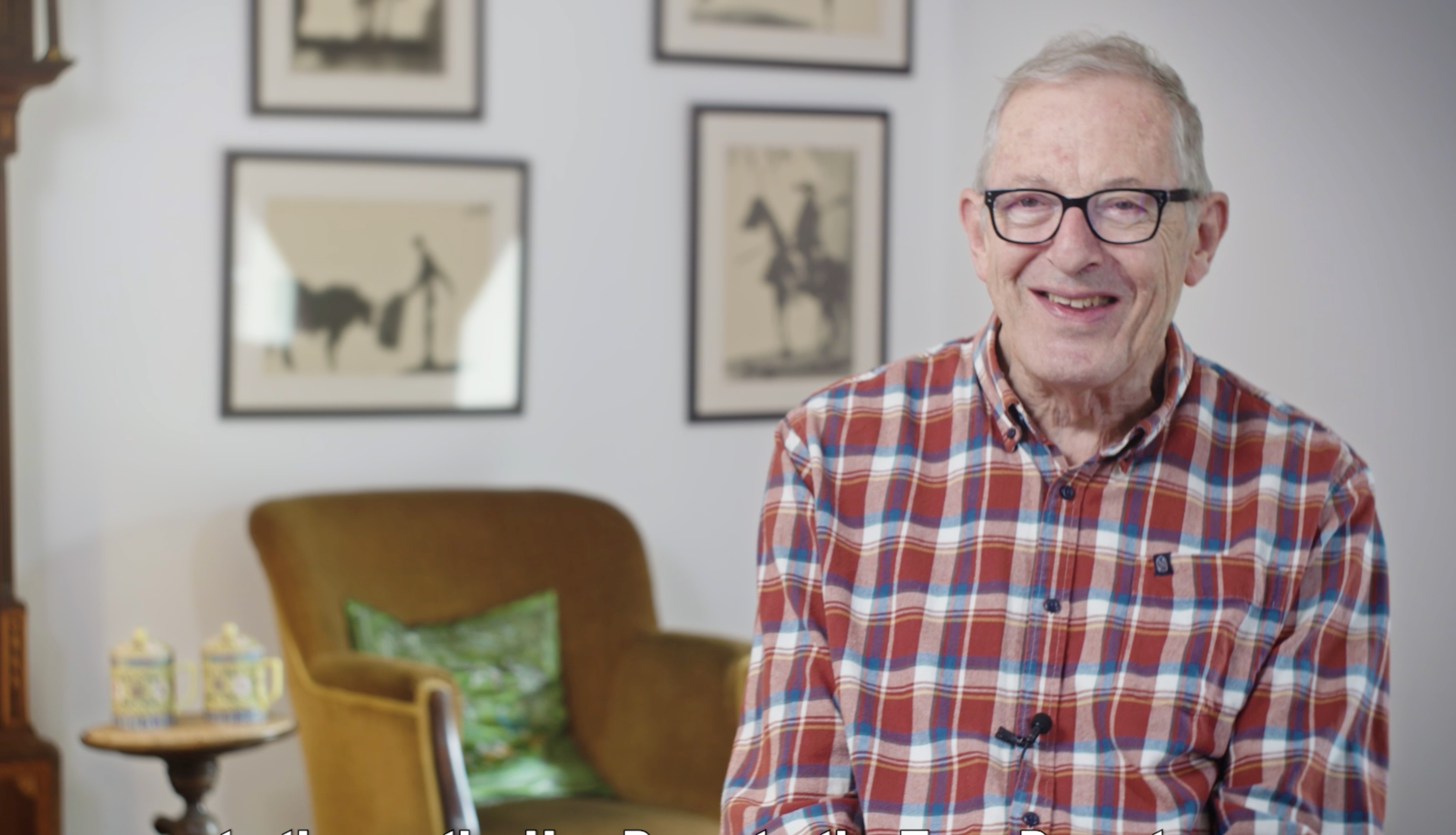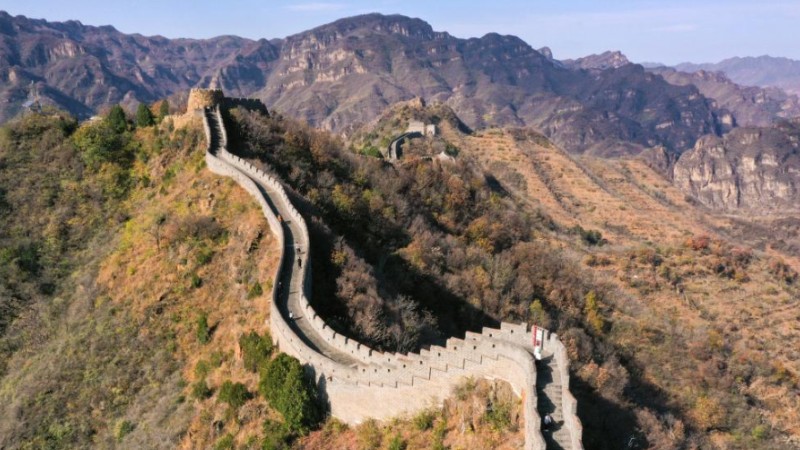Neil Taylor: Understanding China through tourism
Even in his 70s, Neil Taylor’s love and dedication to the tourism industry remain strong. He believes that tourism is crucial for discussing the relationships between different people and cultures. Taylor has spent most of his life in the travel business and pioneered in tourism to China. Since the 1970s, Taylor has been actively involved in organizing and leading tours to China, which he described as “pure excitement.” Taylor is amazed by the speed China has developed and changed over the last 50 years, and is discussing a project to attract returning tourists to China.

Neil Taylor (Photo/Patrick Shead-Simmonds)
Initial encounters with China
Taylor’s links with China started in the 1960s when he started studying the Chinese language and Chinese history at Cambridge University. The course was very board and went back about 3,000 years, studying the works of Confucius and classical Chinese inscriptions, as well as history from different Chinese dynasties up to present day China. In 1971, under the auspices of the Society for Anglo Chinese Understanding, Taylor visited China as a student with other young members. He recounted that, “Everything was so surprising that nothing would be a disappointment, whether we were on the Great Wall or in the Forbidden City.” He considered this experience of seeing the old China and the new China a pleasure.
Taylor was very interested in the travel business and ran the Cambridge travel agency. When he graduated from college, he combined his two interests by starting up an agency, which then specialized in travel to China. In 1976, he led his first commercial tour to China. Following the opening of the Museum of the Terracotta Army in 1979, Xi’an became a regular point of visit. So, the standard itinerary for tourists was going to Beijing, Xi’an, and Chongqing, then Shanghai and perhaps Guangzhou, before leaving through Hong Kong.
Taylor recalled that for many tourists, going to see the Terracotta Army was the most exciting part to visit in China. New hotels opened in Xi’an after the discovery of the Terracotta Army, and it was easy to fly there. Some people were also willing to go on a 30-hour train ride to just see the Terracotta warriors in person. Taylor still vividly remembers seeing the warrior sculptures on site; even though he is 6 foot 5, the warriors are much taller than him. He considers this experience to be remarkable, since by going to any museum in Europe one could only view individual paintings, sculptures, or tapestries. But in Xi’an, numerous exquisite pieces of sculptures are exhibited at one time. For Taylor, the magic of the Museum of the Terracotta Army is that it is constantly expanding, and even after going to Xi’an for about 20 years, there are always new things to find out.
In 1992, Taylor worked with Frances Wood on the second edition of The Blue Guide to China. He contributed to the practical side of the book, while Wood focused on the academic side such as, Chinese history, art, and culture. The book, arranged by town and region, was written during a time when more and more foreigners began living in China and had a chance to travel around the country. So, Taylor and Wood tried to cover the entire China and give as much detail as possible. In comparison, previous guidebooks on traveling in China only explored a limited number of places.

Blue Guide China
Shifts in China over the years
Taylor spoke about the rapid development in China. He said that “China has probably changed more in the 50 years than any country I know, including my home country UK.” From the mid 1980s, China became international, and there are tens of thousands of foreigners who come to live and travel in China every year. The road signs, as well as signs at airports and railway stations are in Chinese and English. Many young people now speak English.
Another thing Taylor is amazed with is the respect for history in China, which goes back to 5,000 years. He said, “As China took its history more and more seriously, museums became greater interest.” Through the 1980s up today, whenever visitors go back to China, they find either old museums were extended, or new museums were built. The Palace Museum’s collection expanded over time that it is easy for people to spend days looking at the precious Chinese artifacts housed inside. Taylor also recalled his trip in Yunnan about 10 years ago, where a new museum of the size of the British Museum had opened. So, one can see the whole of Chinese history in whichever town one chooses to visit.
Tourism in China has changed massively as well. Taylor’s major memory of leading tours to China from the 1990s was that he no longer booked flights because train trips in China became quicker and quicker. A journey to Shanghai that used to take 30 hours, gradually came down to about 4 or 5 hours. He considered this loss of air travel as a bonus that not only saved the time of tourists, but could also let them enjoy the beautiful scenery of the Chinese landscape on high speed trains.
Taylor pointed out that in the last 20 to 30 years, there are also closer links between specific Chinese towns and Western towns, which acted as commercial incentives to encourage people in those places to visit each other. For example, the coastal city Weihai has a close link with Cheltenham in West England. To encourage overseas travels to China, Lufthansa, the German airline, also has a direct flight to Qingdao.
Future collaboration in Chinese tourism
Taylor is currently discussing a tourism project in Hunan Province, which aims to attract tourists for a return visit to China. Encouraging tourists to spend two weeks in Hunan, then perhaps travel to the northeast part of China, and before they return to spend a day or two in big cities like Beijing, Shanghai to visit new museums or buildings. Taylor believes that “one can have a second, third, fourth tour to China and have very different experiences.” He wants to try and develop for China a feeling where tourists can go every year. So there will be addicts in China who would visit the country every year, like what happens in Europe.
For Taylor, traveling is an important way for people to understand the world. There is only so much one can learn about a country by watching a film for half an hour or reading a book. However, if one is waiting for a bus or a train, walking down a main street in the countryside, being completely isolated and immersed in the environment, one can literally smell the country. Taylor said, “If you are there, looking from the side of your left and the side of your right, you are seeing so much more, picking up different elements ranging from nature to the architecture of the country.”
Photos
Related Stories
- Sneak peek at China's first homegrown large cruise ship
- In pics: landscape of earth forest in China's Tibet
- China's first homegrown large cruise ship delivered
- Winter tourism promotion adds allure to travelling Tibet
- China drops health declaration requirements for cross-border travelers
- Tourists visit "Sky Bridge" sightseeing service area in Guizhou
- China's passenger trips surge in first 3 quarters
Copyright © 2023 People's Daily Online. All Rights Reserved.









